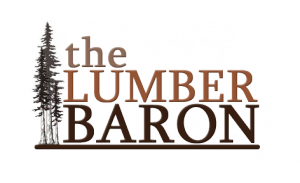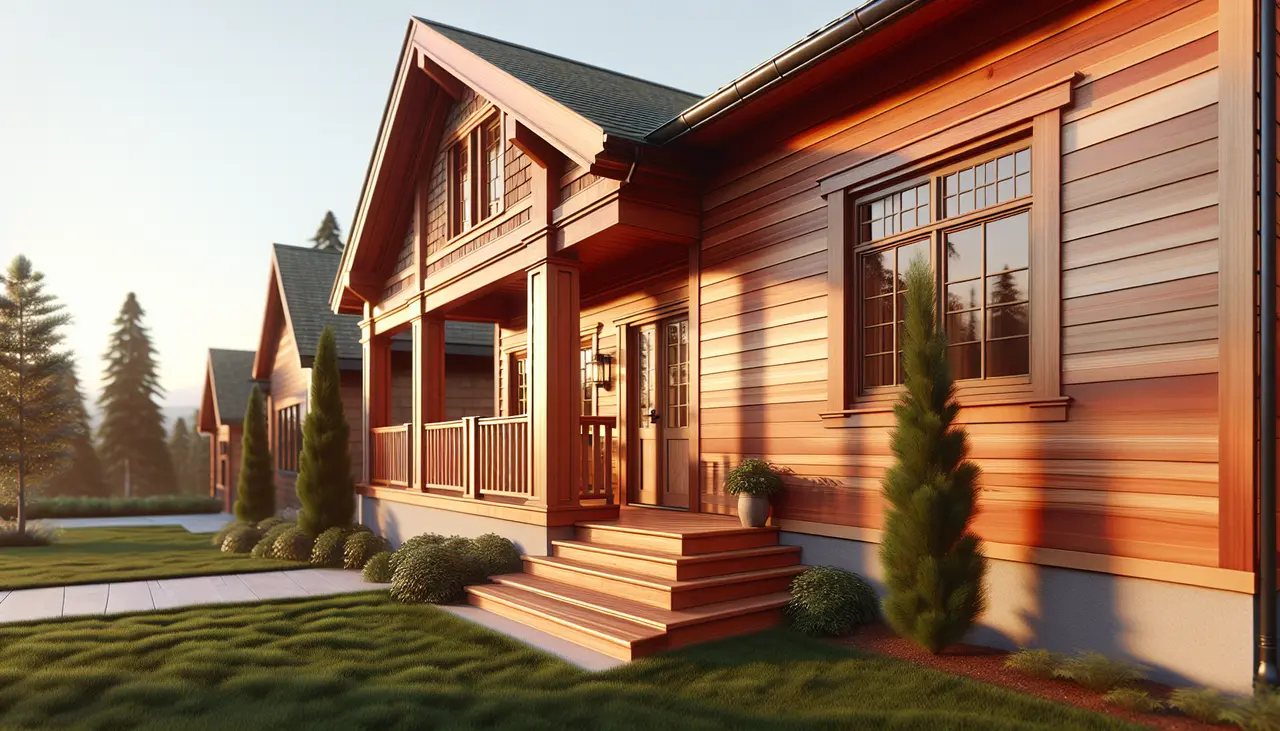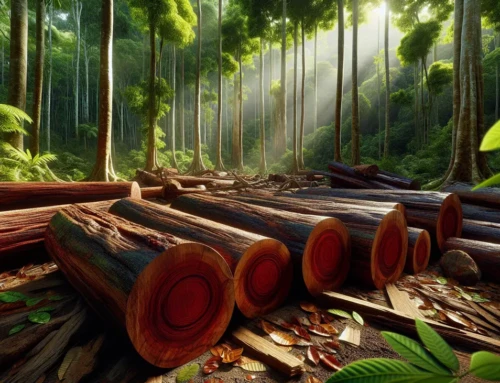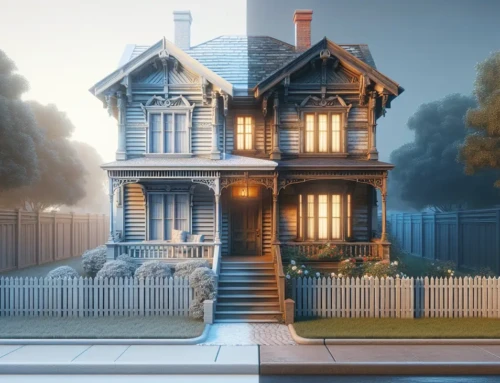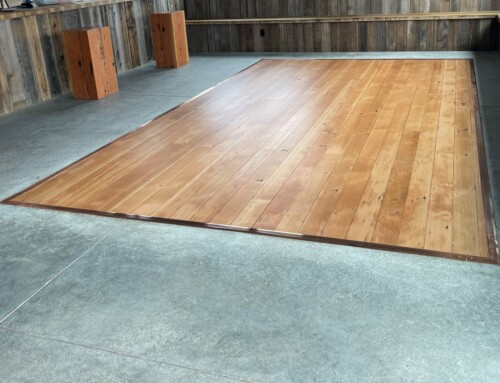Introduction to Wood Siding: Cedar and Redwood
When it comes to protecting your house from the elements, wood siding is a choice that blends strength with natural beauty. Cedar and redwood have long stood out from the rest. These woods offer unique advantages that make them popular for siding. Cedar, known for its rich color and texture, also packs natural oils that repel insects and resist decay, making it a long-lasting option for your home’s exterior. Redwood, on the other hand, doesn’t just catch eyes with its vibrant hue; it also boasts resistance to moisture and decay, thanks to its inherent chemical composition. Both options promise durability and a timeless look, navigating through harsh weather conditions without losing their charm. Plus, at The Lumber Baron, we only sell eco-friendly milled lumber. Whether you value aesthetics, quality, longevity, or sustainability, cedar and redwood siding does it all, ensuring your home looks great and stands strong against the elements.
Cedar Siding: A Timeless Choice
Cedar siding isn’t just about looks; it’s a solid investment for you as a homeowner. First off, cedar is naturally resistant to pests like termites and moisture, which can save you headaches and money over time. Unlike other materials that might start to wear down or look dated, cedar maintains its integrity and appearance. It ages gracefully, developing a unique silver-gray patina that many find appealing. Plus, it’s got insulation properties, keeping your house cooler in summer and warmer in winter, which can cut down on energy bills. The cost upfront might seem higher compared to some other materials, but considering its durability and lesser need for maintenance, cedar offers value for the money spent. Our clear Western Red Cedar has very dense growth rings, giving it a clean, more uniform, modern look. This ring density also all but eliminates grain “lifting,” boosting the siding lifespan, making cedar not just a pretty choice but a practical one too.
Redwood Siding: Why It Stands Out
Redwood siding isn’t just another siding option; it stands apart for some pretty solid reasons. First off, it’s naturally beautiful. With its rich, vibrant colors and unique patterns, redwood adds a warm, inviting look to any home. Redwood is also resilient. We’re talking resistance to shrinking, warping, and cracking tough, which means it can take on weather challenges without looking like it’s been through a battle. As if that’s not enough, all heart redwood siding is like a fortress against termites and other wood-boring pests thanks to its natural insect-repelling properties.
Now, about longevity—redwood siding lasts. With proper maintenance, this siding can keep your house looking sharp for decades, making it a smart choice for those who don’t want to go through the expensive task of replacing their siding again. And for the environmentally conscious, redwood siding is a win. It’s sustainably sourced, reducing environmental impact, and it’s biodegradable, which means it won’t sit in a landfill for eternity. Our incredible old growth reclaimed redwood options can give you even more peace of mind.
In summary, redwood siding is more than just pretty; it’s durable, pest-resistant, long-lasting, and eco-friendly. It’s like the superhero of siding options, ready to protect and beautify your home for years to come.
Durability and Resistance of Cedar and Redwood
Aside from being pretty, Cedar and Redwood stand out in the world of siding because they are super durable. They naturally resist rot, decay, and insect attacks, meaning they won’t quickly rot out or become termite food. This robust feature is thanks to the natural oils and tannins in both woods. With Cedar, you’re looking at a wood that can handle moisture like a pro, reducing the risk of warping and swelling. Redwood, on the other hand, is known for its strength and stability, holding paint and stains better than most, which means less upkeep for you. Both types of wood can last decades if treated right. So, if you’re in the market for siding that can take a punch from Mother Nature and not flinch, Cedar and Redwood are your go-to contenders.
Maintaining the Integrity of Your Home
Redwood was a common choice for material choice for many of the home here in the Bay Area, CA. It’s beauty, longevity and availability made it a no brainer. As redwood became more difficult to source, people began replacing redwood siding with other synthetic options like vinyl and cement. Although less expensive, these options ware very differently and can look cheap over time. At The Lumber Baron, we’ve specialized in redwood for over 45 years and still stock a ton of high grade redwood siding options. We believe it’s important to maintain the integrity of the houses here, rich in history and uniqueness. That’s why we work so hard to maintain such a large inventory of high quality redwood and western red cedar options, unmatched in our area.
Aesthetic Appeal: The Natural Beauty of Wood
Cedar and Redwood isn’t just a material choice; they’re statement pieces for your home. Their natural charm adds a warm, inviting look that synthetic and cement sidings can’t match. Cedar, with its rich grain and variety of hues, complements any home style, making it look upscale without trying too hard. Redwood, on the other hand, boasts a deep, reddish tone that ages beautifully over time, giving your house a timeless elegance. Both woods have a way of blending seamlessly with any landscape, from lush greenery to stark deserts, enhancing the natural surroundings rather than detracting from them. Their aesthetic appeal goes beyond just looks; these woods tell a story of quality, durability, and a nod to refined taste. That’s why, when it comes to adding natural beauty and character to your home, cedar and redwood sidings are unparalleled.
Maintenance: Keeping Cedar and Redwood Looking Great
Cedar and Redwood siding are popular because they don’t just sit there looking pretty; they fight back against the elements. But, like any warrior, they need a bit of upkeep to keep them at their best. Every few years, you’ll want to clean your siding. Just a soft brush and some soapy water will do the trick. Avoid power washing; it’s like using a cannon to kill a fly. Way too harsh. Then, there’s the matter of sealing or staining. Left alone each both cedar and redwood will turn a beautiful silvery, gray. Other prefer trying to maintain the original, fresh milled color. It’s possible but this isn’t a one-and-done deal. Every few years, you’ll need to reapply to keep the moisture out and the beauty in. If you see any mildew or mold starting to throw a party, get a mildewcide and show them the door. Also, check for any damage or wear. Remember, keeping these sidings looking sharp isn’t just about curb appeal; it’s about protecting your investment. So, give them a little TLC, and they’ll keep your home looking top-notch for years to come.
Environmental Benefits of Choosing Cedar and Redwood
Cedar and Redwood stand out not just for their beauty and durability, but also for their environmental perks. Both woods are naturally resistant to decay, pests, and water damage. This means they don’t need frequent replacement or heavy chemical treatments, both of which can harm our planet. Here’s why choosing Cedar or Redwood is a green thumbs-up:
Firstly, Cedar and Redwood grow pretty fast compared to other trees used for siding. Fast growth means these trees can be replenished more quickly after they’re harvested, leading to a more sustainable use of our wood resources.
Secondly, the natural oils in these woods make them resistant to bugs and rot without extra chemical treatments. This lowers the amount of potentially harmful substances released into the environment.
Lastly, wood, in general, is a carbon-friendly material. Trees absorb carbon dioxide as they grow, and this carbon remains stored in the wood even after it becomes part of your house. By choosing Cedar or Redwood siding, you’re essentially locking away carbon that might otherwise contribute to climate change.
So, by picking Cedar or Redwood for your siding, you’re not just making your house look good. You’re also making a choice that’s good for our planet.
Cost Comparison: Cedar vs. Redwood Siding
When it comes to choosing siding for your house, it’s all about getting the best bang for your buck while making sure it looks great and lasts long. Cedar and Redwood are top contenders in the game, each with its own price tag and longevity on the wall. Redwood often comes in a bit cheaper, costing around (8 to )12 per square foot for materials alone. Old growth reclaimed options vary depending on quality but generally fall in the (5-)30 per square foot range. On the other hand, our New #2 Btr Clear Western Red Cedar, can push the budget slightly higher to (18 to )20 per square foot. Remember, these numbers can change based on where you live and the quality of material you’re eyeing. In the end, both offer remarkable value over time, thanks to their durability and low maintenance needs, making them worth every penny upfront. So, if you’re weighing cost versus quality, Cedar gets you savings now, but Redwood could save you more in the long haul. Choose wisely!
Installation Tips for Cedar and Redwood Siding
When you’re getting ready to install cedar or redwood siding, the process is straightforward, but attention to detail makes all the difference. No matter which siding pattern you choose, ensure the walls are clean, dry, and smooth. You’re aiming for a solid foundation, so any moisture or bumps could mess with that. Next, apply a water-resistant barrier. This step is crucial. It blocks moisture from getting in, which is vital since both cedar and redwood, despite their durability, don’t like too much water. When putting up the siding, leave a small gap between each board. This isn’t you being sloppy. Wood expands and contracts with the weather, and those gaps prevent warping. Now, about nails – use stainless steel! Why? Because other types can stain your beautiful wood. The tannins in Redwood and Cedar have a tendency to eat through coatings on less expensive screws. Over time the exposed metal will leave ugly black streaks on your beautiful wood. Remember, you’re working with materials that forgive no shortcuts. Cedar and redwood demand respect but repay you with longevity and style.
Conclusion: Making the Right Choice for Your Home
Choosing between cedar and redwood for your home’s siding boils down to balancing beauty, durability, and cost. Cedar, known for its rich color and exceptional resistance to decay, makes a statement on any home. Redwood, on the other hand, stands out for its striking appearance and natural resistance to pests. It’s a bit pricier, but for many, the unique look and extended lifespan justify the investment. Think about what matters most to you: Is it the initial cost, the look, the maintenance, or the longevity of the siding? Both cedar and redwood offer compelling benefits, but the right choice depends on your priorities and budget. Remember, the best decision is one that you’ll be happy with for years to come.
